Success Stories In Frog And Toad Conservation: Real-Life Efforts Making a Difference
Frogs and toads face many challenges today. Pollution, habitat destruction, and disease have heavily impacted their populations.
Thanks to dedicated conservation efforts, some species are making a remarkable recovery.
Let me take you through a few inspiring examples of success stories in frog and toad conservation.
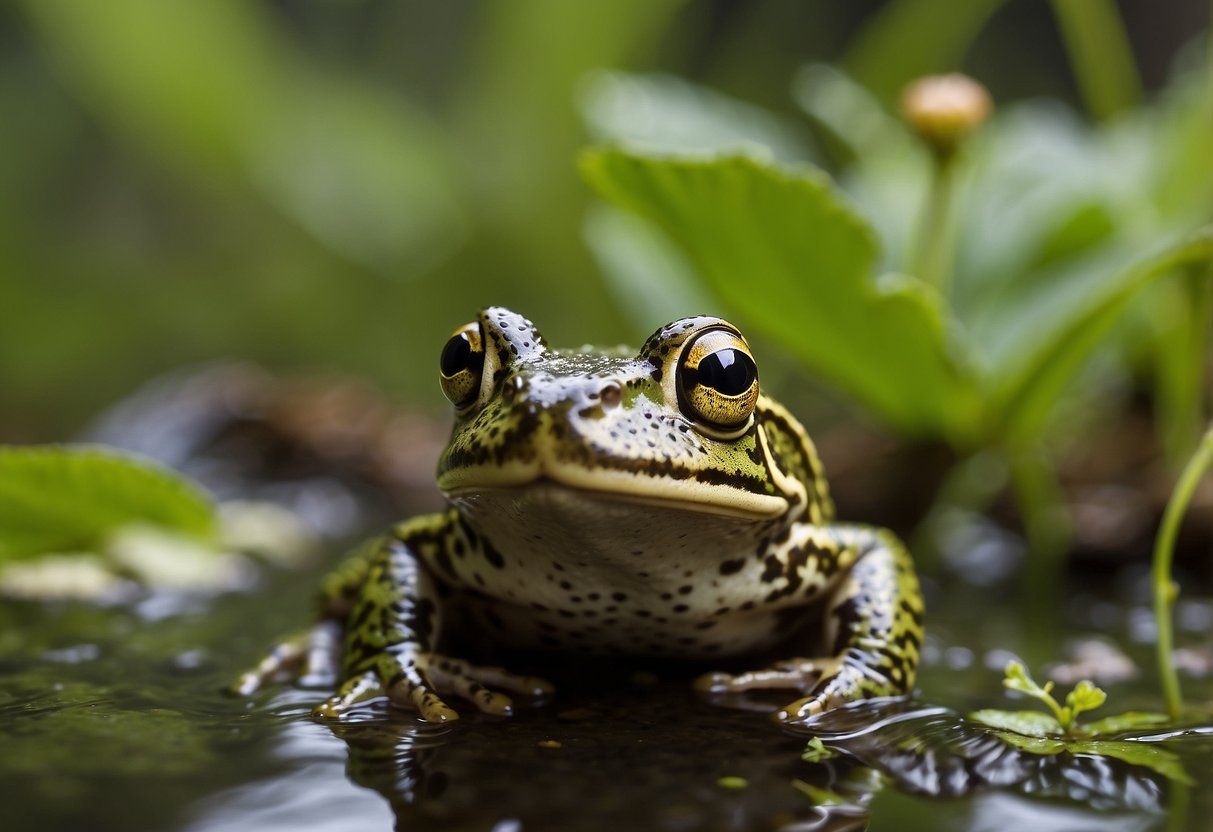
The Wyoming toad, once one of the most endangered amphibians in North America, has found new hope. Conservation areas have been established, bringing together various stakeholders to work towards a brighter future for this species.
Similarly, the relict leopard frog populations along the Colorado River have been bolstered through persistent conservation efforts spanning decades.
One fascinating case is the rediscovery of the dusky gopher frog in Mississippi.
This frog highlights how strong conservation laws and funding can make a difference.
From dedicated conservationists to engaged communities, these success stories show that we can reverse the decline of these amazing creatures.
Key Takeaways
- Conservation efforts have helped several endangered frog and toad species recover.
- Community involvement and strong laws are crucial for successful conservation.
- Rediscovered species offer hope and important insights into effective conservation strategies.
Historical Decline of Frog and Toad Populations
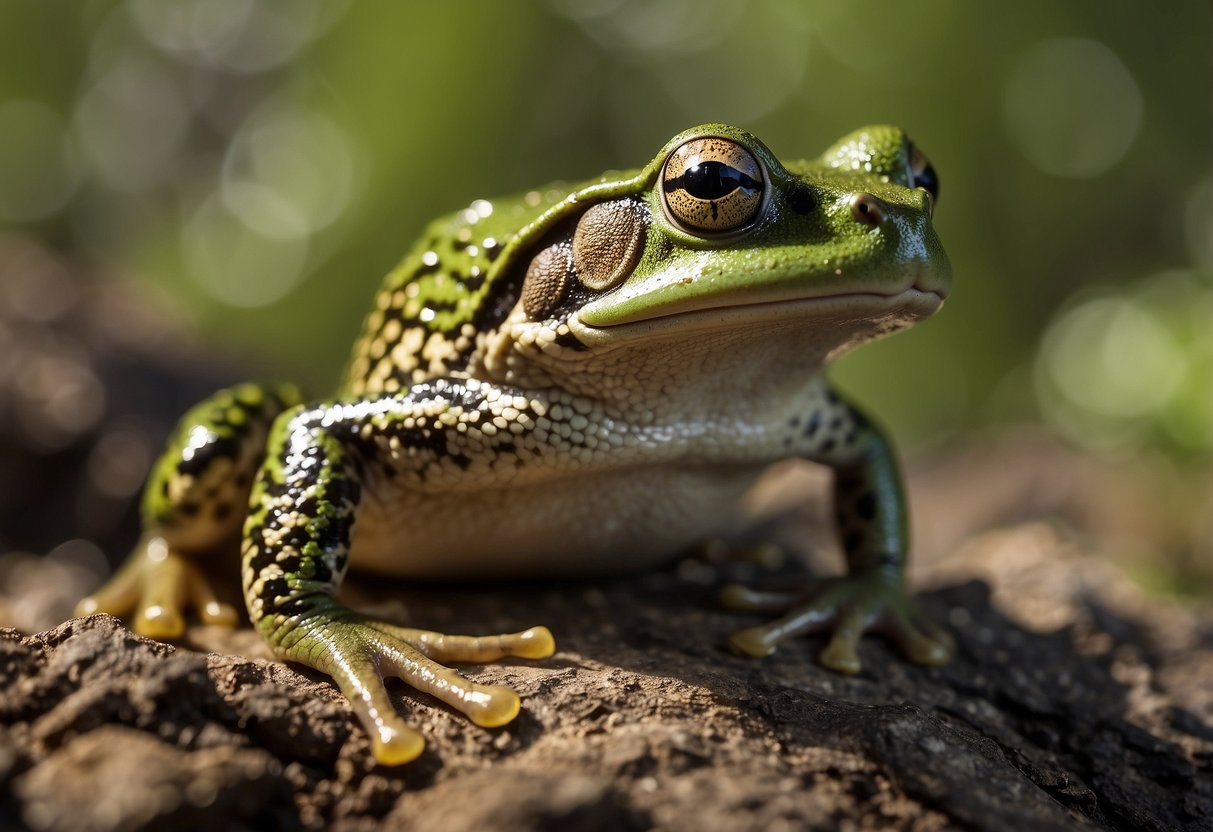
Frog and toad populations have faced significant declines due to various factors. These factors include habitat loss, climate change, pollution, and diseases.
Habitat Loss and Fragmentation
Habitat loss is one of the most critical threats to frogs and toads.
Urban development and agricultural expansion lead to the destruction of wetlands and forests. These habitats are vital for breeding and shelter.
Another issue is habitat fragmentation.
When large habitats are divided into smaller patches, it becomes challenging for frogs and toads to find mates, food, and safe migration routes.
Roads and buildings can isolate populations, making them more vulnerable to predators and environmental changes.
Efforts to protect and restore habitats, such as creating wildlife corridors and preserving wetlands, are crucial for reversing these trends.
Climate Change Impacts
Climate change has added stress to amphibian populations.
Rising temperatures can alter breeding cycles, leading to a mismatch between the availability of resources and the needs of developing tadpoles.
Changes in rainfall patterns also affect frog and toad habitats.
Prolonged droughts can dry up breeding ponds, while intense storms can flood habitats, washing away eggs and larvae. This makes it difficult for populations to recover.
Some species are more sensitive to temperature changes and may struggle to survive in warming climates. Protecting diverse habitats and reducing greenhouse gas emissions can help mitigate these impacts.
Pollution and Pesticides
Pollution is another major threat.
Chemicals from agricultural runoff, industrial waste, and urban pollution contaminate water bodies. Amphibians have permeable skin, which makes them particularly susceptible to toxins in their environment.
Pesticides pose a significant danger as well.
These chemicals can cause direct harm by killing frogs and toads or indirect effects by reducing their food supply.
For instance, insecticides can diminish insect populations, a primary food source for many amphibians.
Reducing chemical use, implementing stricter regulations on pollutants, and promoting organic farming practices can help reduce these harmful effects on frog and toad populations.
Disease and Parasites
Disease has also played a critical role in the decline of amphibian populations.
One of the most infamous diseases is chytridiomycosis, caused by the chytrid fungus. This infection affects the skin, an essential organ for amphibians, leading to widespread mortality.
Parasites, such as the Ribeiroia trematode, can cause deformities in developing frogs and toads, further impacting their survival.
Monitoring and managing disease outbreaks require coordinated efforts from scientists and conservationists.
Research into disease-resistant amphibian strains and habitat management to reduce the spread of pathogens are essential strategies to consider.
Conservation Strategies and Methodologies
There are several effective strategies used in frog and toad conservation.
These include creating protected areas and legal frameworks, restoring habitats, implementing captive breeding programs, and fostering international cooperation initiatives.
Protected Areas and Legal Frameworks
Creating protected areas is a crucial step in frog conservation.
By designating specific regions as protected, we can ensure that frogs have a safe habitat, free from human disturbance.
Laws and regulations are essential for this protection.
These legal frameworks include laws against poaching, restrictions on land use, and policies to reduce pollution.
Governments and organizations work together to enforce these rules.
For example, the Rainforest Trust protects ecosystems for hundreds of frog species.
This cooperative effort is vital for the long-term survival of many frog populations.
Habitat Restoration Practices
Restoring habitats is another important strategy.
Many frog habitats have been destroyed or altered due to urbanization, agriculture, and other human activities.
Rehabilitating these environments helps frogs thrive.
This involves replanting native vegetation, removing invasive species, and improving water quality.
Local communities can participate in these efforts by maintaining frog-friendly gardens and green spaces.
It’s important to avoid using harmful chemicals that can pollute waterways and harm frog populations.
These practices ensure that frogs have suitable environments to live and reproduce.
Captive Breeding and Reintroduction Programs
Captive breeding and reintroduction programs are vital for endangered frog species.
Scientists breed frogs in captivity and release them into their natural habitats once conditions are safe.
This helps increase population numbers and genetic diversity.
These programs also monitor the released frogs to track their survival and reproduction.
Studies published in journals like Ecosphere highlight the success of such initiatives.
By carefully managing these programs, we can give endangered frog species a fighting chance for survival.
International Cooperation Initiatives
International cooperation is essential in frog conservation.
Many frog species are spread across different countries, and threats like climate change and pollution are global issues.
Organizations and governments worldwide must work together to address these challenges.
International agreements and collaborations, such as those facilitated by the IUCN, help coordinate efforts on a global scale.
Sharing research, resources, and best practices ensures that conservation strategies are effective and sustainable.
This united approach is crucial for protecting frog species across their entire range.
Significant Success Stories
Successful conservation efforts have brought certain frog and toad species back from the brink of extinction. These efforts often involve extensive collaboration among scientists, local communities, and various organizations.
The Rebirth of the Mountain Yellow-Legged Frog
Once teetering on the edge of extinction, the Mountain Yellow-Legged Frog has seen a promising recovery.
Found in the Sierra Nevada mountains, these frogs faced severe threats from diseases and invasive species.
A captive breeding program was key to their revival.
Scientists at zoos and labs successfully bred and released thousands back into the wild. Monitoring and habitat restoration also played crucial roles.
These efforts highlight how targeted actions can lead to significant ecological recoveries. Rainforest Trust has supported similar initiatives globally.
Reprieve for the Mallorcan Midwife Toad
The Mallorcan Midwife Toad’s story is another testament to conservation success.
Native to the Balearic Islands of Spain, they almost vanished due to chytridiomycosis, a deadly fungal disease.
Through international partnerships, researchers implemented captive breeding programs. Over time, they reintroduced healthy populations back into the wild.
Continued surveillance and habitat preservation help maintain their populations now.
The Boreal Toad’s Resilience
The Boreal Toad faced habitat loss and diseases that drastically reduced its numbers in North America.
Conservationists launched recovery programs focusing on ecological research and disease management.
Biologists developed habitat enhancement techniques and captive breeding strategies.
Released toads are now adapting to their habitats. Local communities also got involved in monitoring efforts, boosting their chances of survival.
The Panamanian Golden Frog’s Return
The Panamanian Golden Frog is famous for its vibrant yellow color and unique significance in Panamanian culture.
Unfortunately, chytridiomycosis led to its drastic decline.
Institutions like the Jambatu Center for Amphibian Research spearheaded breeding and reintroduction projects.
Successful breeding in controlled environments allowed for the release of healthy individuals back into nature.
Community education and awareness helped garner local support, vital for long-term conservation.
Scientific Research and Findings

Recent research has provided crucial insights into how frogs and toads are recovering from diseases and adapting to changing environments.
Key findings highlight advancements in disease management and how genetic diversity contributes to their resilience.
Advancements in Disease Management
Scientists have made significant progress in fighting fungal diseases like chytridiomycosis, which has devastated amphibian populations worldwide.
One technique involves using “frog saunas” to boost the immune systems of certain species. This method has shown promise in helping frogs survive otherwise fatal fungal infections.
Another study indicates that changing rainfall patterns impact frog and toad reproductive success.
By understanding how weather affects these amphibians, conservationists can develop better strategies to protect them.
These findings offer hope for species once considered doomed.
Genetic Diversity and Resilience
Research into genetic diversity has revealed that it plays a crucial role in the resilience of frog and toad populations.
Diverse genetics in a population can lead to greater resistance against diseases like chytridiomycosis. This can help ensure the long-term survival of these species.
For example, ongoing studies on the common toad (Bufo bufo) show that adaptable and wide-ranging species are better equipped to handle environmental changes.
Efforts to save specific species, such as the Togo slippery frog, also highlight how community involvement and conservation actions can positively impact genetic diversity and resilience.
Community Involvement and Education
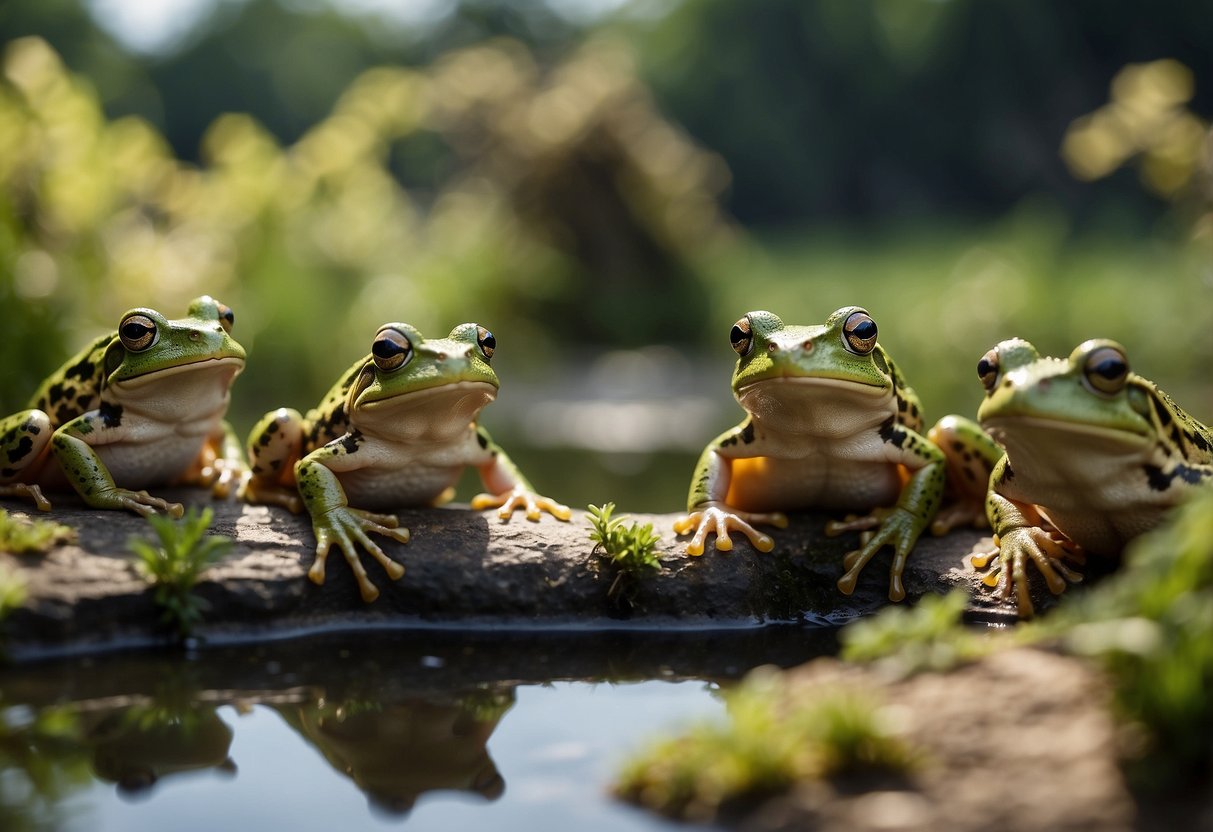
Community involvement and education are vital for frog and toad conservation. Engaging local volunteers and educating the public can significantly contribute to preserving these amphibian populations.
Local Community Conservation Efforts
One key aspect is engaging local communities in conservation efforts. In Wisconsin, volunteers participate in the Frog and Toad Survey. This program allows volunteers to monitor amphibian populations more effectively than a single team could.
Volunteers’ efforts help collect data on species presence and health.
Local community efforts are integral to conservation success. These initiatives spread awareness and mobilize community resources toward a common goal. It’s crucial to have broad involvement, from schools to local environmental organizations, to create a sustainable impact.
Educational Programs for Awareness
Educational programs play a central role in raising awareness about amphibian conservation. In Marinette County, programs like TOAD engage children in environmental learning. These programs make conservation topics accessible and engaging for young students.
Interactive activities, such as field trips and hands-on projects, help students learn about the importance of frogs and toads in ecosystems. By fostering an early interest in conservation, these educational programs create informed future advocates.
It’s important to support and expand such educational initiatives to ensure that awareness continues to grow. Engaging the younger generation through these programs can lead to long-term conservation success.
Challenges and Future Directions
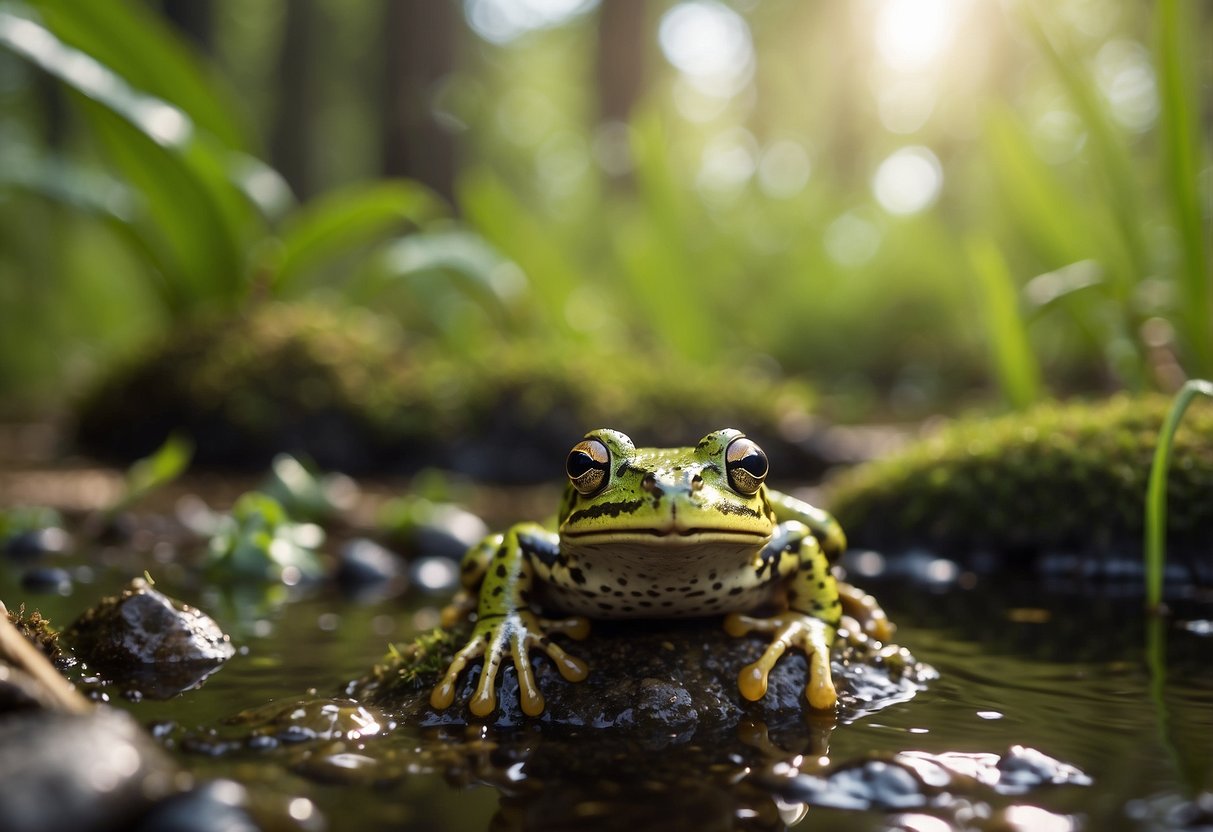
In amphibian conservation, ongoing challenges include habitat destruction and climate change. Addressing these requires targeted research, long-term planning, and innovative strategies.
Continued Threats to Amphibian Populations
Amphibians face numerous threats, including habitat loss, pollution, and disease. Rapid deforestation and land development destroy vital breeding grounds. Species such as southern toads and gopher frogs are especially impacted by changing rainfall patterns, altering their breeding cycles and reducing population numbers.
Climate change further exacerbates these issues, with fluctuating temperatures and irregular precipitation patterns leading to increased droughts. This directly impacts frog survival, as they rely heavily on moist environments.
Additionally, pollution from pesticides and industrial waste contaminates water and soil, making habitats toxic.
Diseases, such as chytridiomycosis, have decimated populations globally. This fungal infection spreads rapidly and is often fatal, threatening numerous species with extinction.
Future Research Priorities
Future research should prioritize understanding climate impacts on amphibians. Studies must focus on how temperature shifts and precipitation changes affect survival and reproduction.
Research at institutions like the Smithsonian’s National Zoo is already showing promising results, such as experimenting with controlled environments to improve frog survival rates.
Genetic studies can help identify resilient species and populations. These insights can guide breeding programs to increase genetic diversity and adaptability.
Collaborations with global organizations, like those involved in the Atelopus Survival Initiative, are essential for sharing knowledge and resources.
Developing and testing new conservation techniques, such as reintroducing captive-bred individuals into the wild, can also be valuable. Continuous monitoring and data collection will provide critical feedback for refining these strategies and ensuring they are effective.
Long-Term Conservation Planning
Effective long-term conservation planning must address both immediate threats and future uncertainties. Establishing protected areas, as done by Rainforest Trust, is crucial for preserving critical habitats.
These areas provide a safe haven for amphibians to live and breed without human interference.
Restoration efforts should focus on rehabilitating degraded habitats by removing pollutants and reforesting areas. Engaging local communities in conservation activities can create sustainable support systems, ensuring ongoing protection and maintenance of these environments.
Creating comprehensive policies that prioritize amphibian conservation is imperative. This includes enforcing environmental regulations, funding scientific research, and promoting educational programs to raise awareness about the importance of frogs and toads.
Successful conservation efforts must be adaptable, backed by scientific evidence, and supported by global cooperation.
Frequently Asked Questions
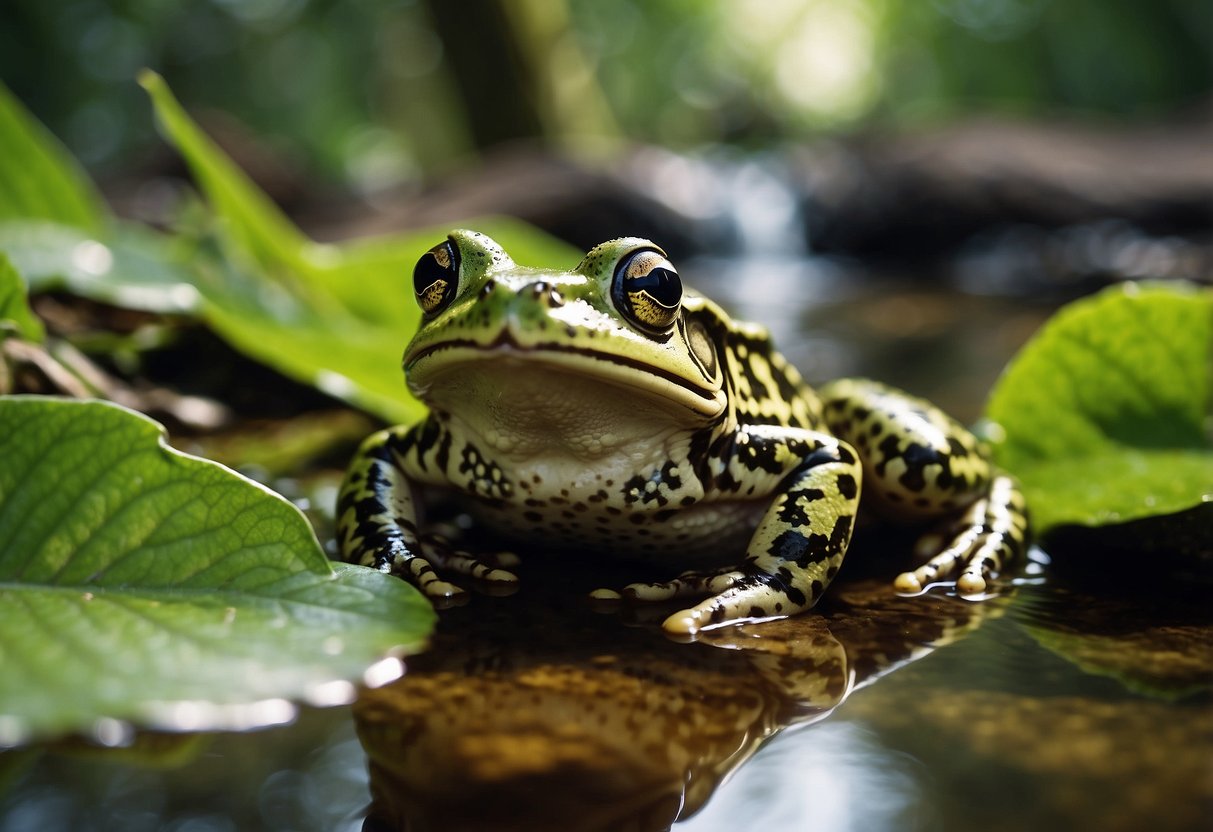
In this section, I’ll address common questions on successful frog and toad conservation strategies, notable recovery stories, key contributing factors, leading organizations, the importance of habitats, and the impact of environmental policies.
What are some successful approaches to frog and toad conservation?
Successful approaches include creating frog-friendly backyards, reducing pesticide use, and reporting diseases. Supporting natural environments and connecting fragmented habitats also play a significant role in conservation efforts.
Can you highlight well-known recovery stories of frogs and toads?
One notable success story is the recovery of the Monte Iberia Eleuth in Cuba. Efforts to protect its habitat have yielded positive results.
Another example is the reintroduction of the yellow-legged frog in California, which has seen population growth due to dedicated conservation efforts.
What factors contribute to the success of amphibian conservation efforts?
Essential factors include habitat protection, public awareness campaigns, and stringent regulations on pollutants. Scientific research on disease management and climate change impacts also significantly contribute to successful conservation.
Which organizations are leading the charge in frog and toad conservation?
Organizations such as the Rainforest Trust and Amphibian and Reptile Conservation are at the forefront.
They work on habitat protection, advocacy, and public education. The Toads N’ Frogs initiative is also crucial for local conservation projects.
What role do habitats play in the successful conservation of frogs and toads?
Healthy habitats provide essential resources like food, water, and breeding grounds. They are crucial for the survival and reproduction of amphibians. Creating and maintaining wetlands and other natural habitats helps sustain frog and toad populations.
How do changes in environmental policy impact frog and toad conservation success?
Environmental policies that limit pollution, protect critical habitats, and fund scientific research are vital.
Policy changes that reduce protections can negatively impact conservation efforts.
Effective policies encourage sustainable land use and support conservation projects.
